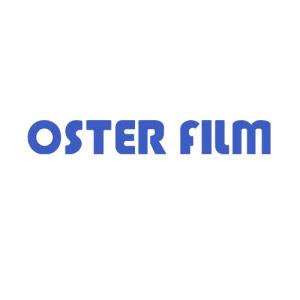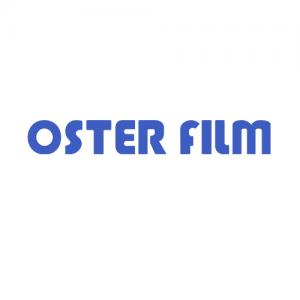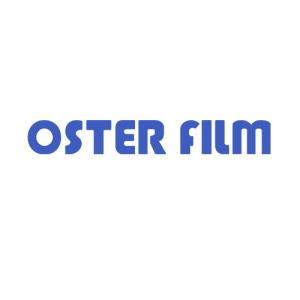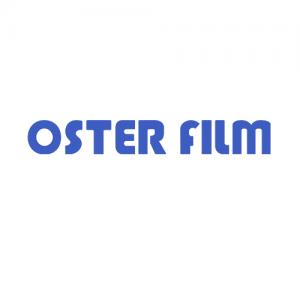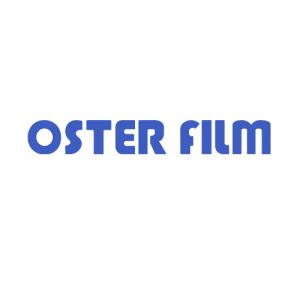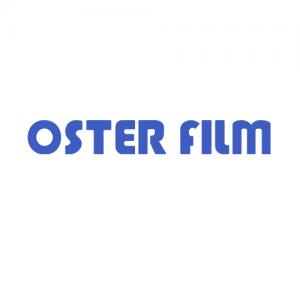Introduction of EVA solar cell encapsulation film
1.Introduction of EVA solar cell encapsulation film1.1 EVA solar cell adhesive film product introduction
The solar cell adhesive film is a product made of EVA(ethylene vinyl acetate copolymer)as the main raw material,added with various additives,and than heated and extruded.The adhesive film has no stickness at room temperature and is convenient for cutting and dividing operations.
At present,the adhesive film is mainly used for the encapsulation of Solar Panels.When encapsulation,firstly,cut the adhesive film of the required size,and stack it in the aluminum alloy frame according to glass-adhesive film-cell board-adhesive film-TPT,than put it into the laminator to heat,press and combine vacuum;
Finally,put it in the curing oven at the set temperature of the required time.
1.High light transmittance,improve the photoelectric conversion efficiency of the module.
2.Reasonable degree of cross-linking to ensure good stability and service life of the components
3.Excellent resistance to UV aging and excellent resistance to high humidity and high temperature aging,to ensure that the components have a service life of up to 25 years outdoors.
4.Very low shrinkage and elongation to ensure the dimensional stability and consistency of your components
5.Strong adhesion performance to various backplanes and glass to ensure safe and efficient operation of components
1.2Brief introduction to solar cells
1.2.1What is solar cell?
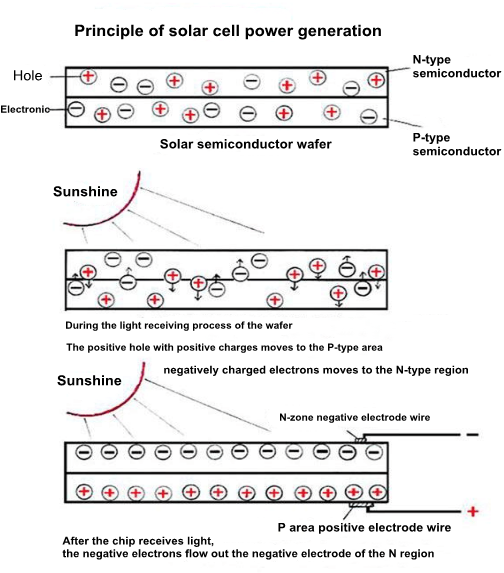
Solar cells are devices that directly convert light energy into electrical energy through photoelectric effect or photochemical effect
Classification of solar cells
According to the crystalline state,solar cells can be divided into two categories:crystalline thin-film type and amorphous thin-film type,and the crystalline thin-film is divded into single crystalline and polycrystalline.
According to the different materials used,solar cells can be divided into silicon solar cells,multi-compound thin film solar cells,polymer multilayer modified electrode solar cells,nanocrystalline solar cells,and organic solar cells.Silicon solar cells are currently the most mature development,occupying a dominant position in the application
(1)Silicon solar cell
Silicon solar cells are divided into monocrystalline silicon solar cells,polycrystalline silicon thin film solar cells and amorphous silicon thin film solar cells.
Monocrystalline silicon solar cells have the highest conversion efficiency and the most mature technology.The highest conversion efficiency in the laboratory is 24.7%,and the efficiency in mass production is 15%.It still occupies a dominant position in large-scale applications and industrial production,but due to the high cost of monocrystalline silicon,it is difficult to reduce its cost significantly.In order to save silicon materials,polycrystalline silicon thin films and amorphous silicon thin films have been developed to replace monocrystalline silicon solar cells.
(2)Multi-compound thin film solar cell
Multi-compound thin film solar cell materials are inorganic salts,which mainly include gallium arsenide III-V compounds,cadmium sulfide and copper-indium-selenium thin-film batteries,etc.
The efficiency of cadmium sulfide and cadmium telluride polycrystalline thin-film solar cells is higher than that of amorphous silicon thin-film solar cells,and the cost is lower than that of monocrystalline silicon cells.They are also easy to mass-produce,but because cadmium is highly toxic,it will cause serious environmental pollution problems.Therefore,it is not the most ideal substitute for crystalline silicon solar cells.
(3)Polymer multilayer modified electrode type solar cell
Replacing inorganic materials with organic polymers is a research direction that has just begun in solar cell manufacturing.
Because organic materials are flexible,easy to manufacture,widely sourced,and low cost,etc.
Therefore,it is of great significance for large-scale utilization of solar energy and providing cheap electricity.
However,the research on the preparation of solar cells from organic materials has only just begun.
Neither the service life nor the battery efficiency can be compared with inorganic materials,especially silicon batteries.
Whether it can be developed into a meaningful product remains to be further studied and explored.
(4)Nanocrystalline solar cells
Nano-TiO2 crystal chemical energy solar cells are newly developed,and the advantages are their low cost,simple process and stable performance.
The photoelectric efficiency is stable above 10%,and the production cost is only 1/5-1/10 of that of silicon solar cells.The life span can reach more than 20years.
However,since the research and development of this type of battery has just started,it is estimated that it will gradually enter the market in the near future.
(5)Organic solar battery
Organic solar cells,which are solar cells whose core part is composed of organic materials.many people are not familiar with organic solar cells,which is reasonable.Nowadays,more than 95% of mass-produced solar cells are silicon-based,while the remaining less than 5% are made of other materials.
Solar cell(module)production process
The module line is also called the encapsulation line,and encapsulation is a kep step in the production of solar cells.
With a good encapsulation process,the encapsulation of the battery not only ensures the life of the battery,but also enhances the battery's anti-strength.
The high quality and long life of the product is the key to customer satisfaction,so the encapsulation quality of the module board is very important.
Process
1.Battery inspection--
2.Front side welding-inspection-
3.Back side connection-
4.Laying(glass cleaning,material cutting,glass pretreatment,laying)
5.Laminating-
6.Deburring(removing edges),Cleaning-
7.Frame mounting(gluing,corner keying,punching,framing,scrubbing residual glue)--
8.Welding junction box-
9.High voltage test-
10.Component test-Appearance inspection-
11.Packing and warehousing
Solar cell encapsulation
In order to protect the battery against mechanical stress,exposure and moisture,the series-connected battery is embedded in a transparent encapsulation material,which can also provide electrical insulation to the battery.
For structural stability,the encapsulation system uses cover material.In most cases,glass is used,but acrylic,metal or plastic diaphragms are also used.
Depending on the manufacturing process, solar cells can be placed on, behind, or between the cover material.
It is very important to use transparency materials to be the cover of the light-sensitive surface of the solar cell.
Because the more transparent material used,the more solar energy can be projected on the solar cell.
For this reason,low-iron glass is often used as a front cladding because it can be let 91% of the light through.
This glass is tempered to strengthen its resistance to high thermal stress.
The recently developed anti-reflective glass uses sintering process or dip coating,so it has an anti-reflective coating that can achieve a light transmittance of 96%.
The solar cell module using this anti-reflective glass absorbs about 3.5% more energy than ordinary glass.
There are three commonly used encapsulation methods at present:
Ethylene Vinyl Acetate Copolymer (EVA) encapsulation
Teflon (Teflon R) encapsulation
Cast resin encapsulation
Ethylene vinyl acetate(EVA) encapsulation
When encapsulated with EVA,the battery is serially laminated in a vacuum chamber with positive and negative pressure heating(vacuum lamination process).
The EVA is melted in this manufacturing process and surrounds the entire solar cell.
The EVA needs anti-ultraviolet function on the front side.In most applications,this is a piece of highly transparent white tempered glass(sunglass),
and its backing can be a tradictional hardened glass flake or an opaque film.
EVA encapsulation are mostly used to manufacture standard and special modules,and the maximum assembled size is 2 meters by 3 meters.
Along the size of module increases,the batteries will start to float during the lamination process,which will make it difficult to keep the gaps equally between the batteries.
However,the use of different substrates will be able to assemble different stack configurations.
EVA film product specifications and applications
EVA laminated glass film introduction
EVA film is a kind of high-viscosity film material made of high molecular resin(ethylene vinyl acetate copolymer),added with special additives,and processed by special equipment.
It is also called modified EVA film for laminated glass.It has strong adhesion to inorganic glass.
It has the characteristic of toughness,transparency,temperature resistance,cold resistance,high adhesion strength,high elongation at break,and good humidity resistance.
It is an ideal and economical adhesion material for manufacturing safety laminated glass in the world.
And it can partially replace PVB materials used in automobiles and construction industries.
The laminated glass made with EVA film can achieve ideal effects such as safety, heat preservation,wind resistance,impact resistance,sound insulation and UV protection.
